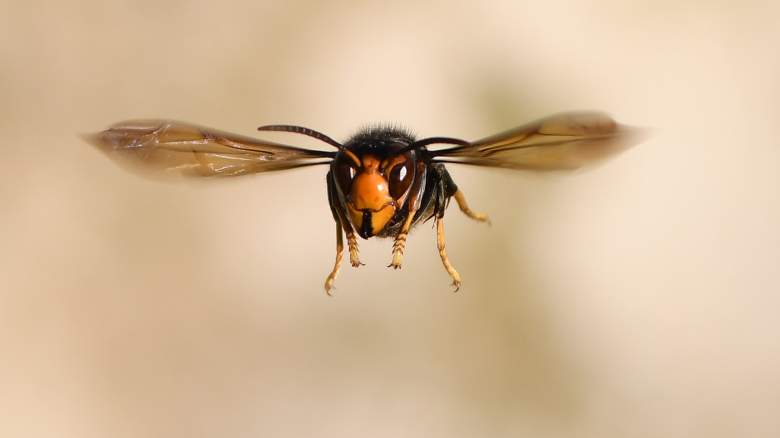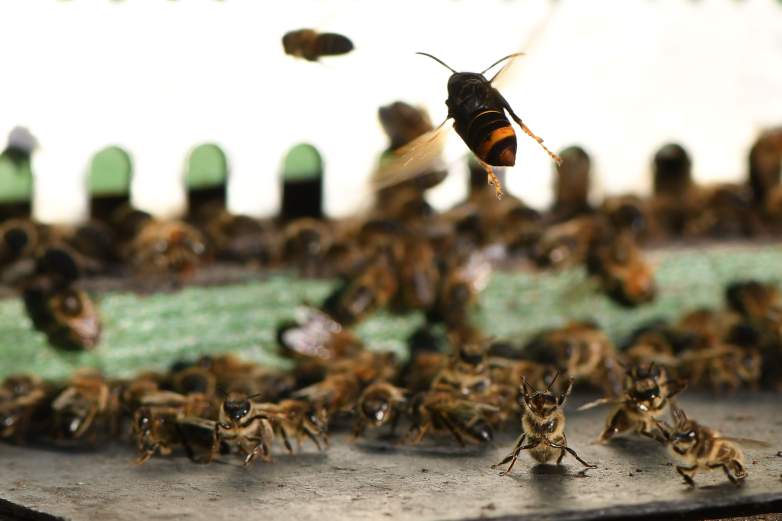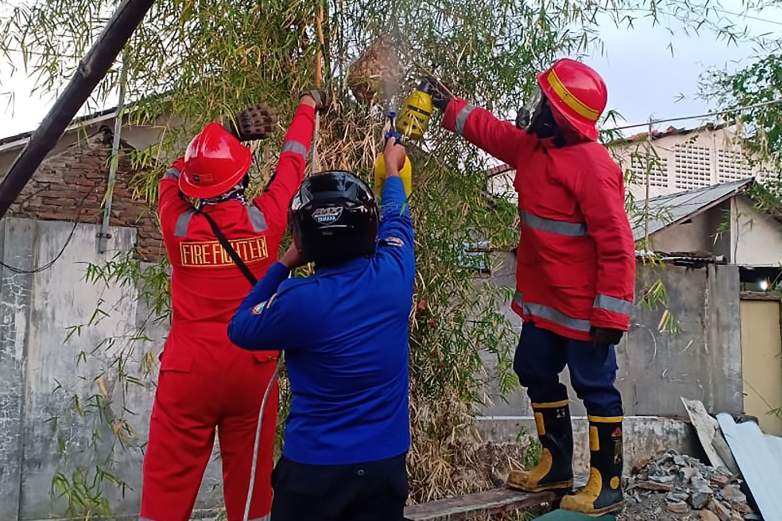
It’s already been a rough year in terms of unexpected causes of death making its way to America in 2020, but in addition to coronavirus, another lethal entity is making its way from Asia, insects known as “murder hornets.”
Susan Cobey, a bee breeder with Washington State University’s Department of Entomology, said of this Asian giant hornet, scientifically known as Vespa mandarinia, “They’re like something out of a monster cartoon with this huge yellow-orange face,” over two inches in length, and queens can fly up to 20 miles per hour.
According to the Washington State Department of Agriculture (WSDA), the first-ever verified sighting of murder hornets in North America was in Blaine, Washington in 2019, and as The New York Times reported on Saturday, the insects which are responsible for up to 50 deaths a year in Japan, have officially arrived.
What Does It Feel Like After Getting Stung By A Murder Hornet?

GettyAn Asian hornet chases bees near a beehive on September 14, 2019, in Loue, France.
Conrad Bérubé, a beekeeper and entomologist, was hired to kill what was believed to be a murder hornets’ nest in Vancouver Island back in November. While wearing a bee suit, shorts, and sweatpants, along with Kevlar braces on his ankles and wrists, Berube was stung through his layers of protection seven times.
“It was like having red-hot thumbtacks being driven into my flesh,” he told The Times. Bérubé described feeling like he had the flu the following day, suffering from body aches. While Bérubé has been stung by bees thousands of times due to his chosen line of work, he described the stings from the Asian hornets as way more painful.
Jun-ichi Takahashi, a Kyoto Sangyo University researcher in Japan, explained how the insect species earned the title of the “murder hornet.” The reason these giant hornets received the lethal nickname, if someone is attacked by a group of murder hornets, that person can fall victim to a toxic level of venom, which can be fatal. Takahashi compared the sting of a murder hornet to that of a venomous snake.
According the researchers as Washington State University, murder hornet stings can be lethal to humans even if they aren’t allergic to bees. The stings are incredibly painful because they inject a strong neurotoxin.
WSDA entomologist Chris Looney warns that if you see a murder hornet or nest, “Don’t try to take them out yourself if you see them. If you get into them, run away, then call us! (1-800-443-6684). It is really important for us to know of every sighting if we’re going to have any hope of eradication.”
You can also report sightings online at agr.wa.gov/hornets.
Giant Asian Hornets Pose A Huge Threat To Honey Bees

GettyFire fighters smoking a hornets’ nest.
Murder hornets feed on other large insects, especially honey bees. They attack beehives and feed on larvae and pupae after killing adult bees. If murder hornets obliterate honey bees, the will affect farmers and growers of crops. Therefore, it’s important to get rid of all murder hornets.
Todd Murray, WSU Extension entomologist and invasive species specialist said, “It’s a health hazard, and more importantly, a significant predator of honey bees. We need to teach people how to recognize and identify this hornet while populations are small so that we can eradicate it while we still have a chance.”
READ NEXT: WATCH: Kayleigh McEnany Pledges ‘I Will Never Lie To You’ at First Press Briefing